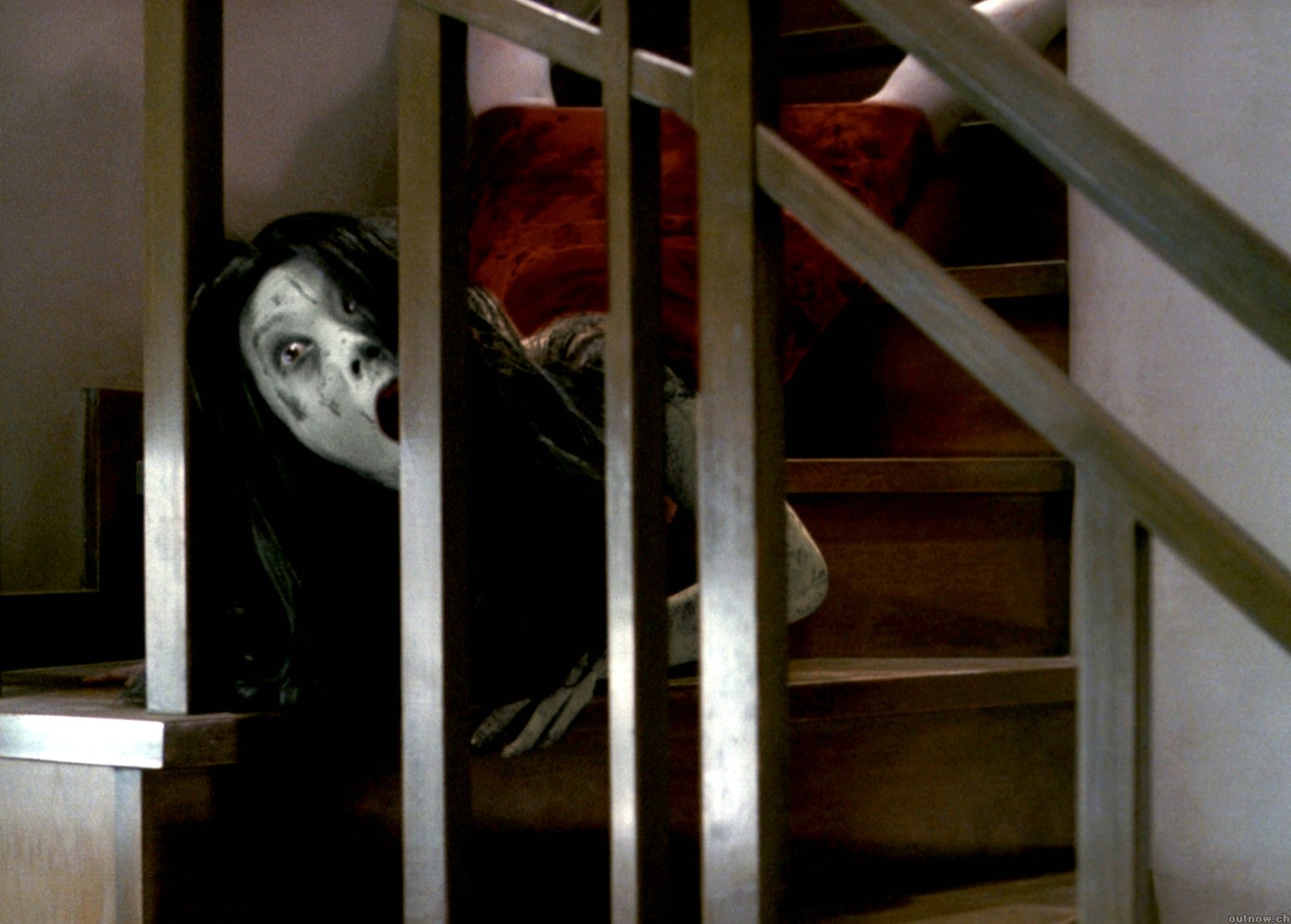Ever since WHITE ZOMBIE (1932) introduced movie audiences to the classic image of the zombie (a mindless revived corpse, directed by a Voodoo houngan [priest]), the restless dead have been shambling across the silver screen in various shapes and sizes, eventually throwing off the shackles of their masters and developing strange new appetites (first for human flesh, then for brains). Here is a representative sample.

WHITE ZOMBIE (1932): Murder Legendre (Bela Lugosi, left) directs his mindless minions. The corpses have no will of their own; the film’s true monster is their master.
*

REVOLT OF THE ZOMBIES (1936): This week follow-up to WHITE ZOMBIE posits the idea of an unstoppable undead army in WWI – offering the first suggestion of zombies as a worldwide threat.
*
THE GHOST BREAKERS (1940): This is probably the first zombie film to mix horror and comedy. Although the zombie (Noble Johnson) is revealed to be a fake planted to scare away Bob Hope and Paulette Goddard, his scenes are played for scares more than laughs.
*

KING OF THE ZOMBIES (1941): Comic actor Mantan Moreland gets some laughs from his reaction to traditional-looking zombies, who turn out to be under the direction of a Nazi scientist.
*

I WALKED WITH A ZOMBIE (1943): Darby Jones as the zombie Carrefour, in the classic produced by Val Lewton. The Voodoo element is strongly represented here. Directed by Jacques Tourneur, this is probably the greatest film every made using the traditional zombie theme.
*

ZOMBIES OF MORA TAU (1957): This low-budget effort is memorably only for the novel concept of water-logged zombies guarding a sunken treasure.
*

NIGHT OF THE LIVING DEAD (1968): Though the word “zombie” is never mentioned, George A. Romero’s film changed the genre forever, reinventing the walking dead as cannibal corpses, driven by instinct to consume the living. Romero wrote but did not direct the 1990 color remake – a worthwhile film, but not classic.
*

TOMBS OF THE BLIND DEAD (1971): Amando de Ossorio’s film introduced the zombie-like Knights Templar, who would return in three sequels. Despite their desiccated appearance, the Templars were more of an undead cult than mindless corpses.
*

LET SLEEPING CORPSES LIE (a.k.a., THE LIVING DEAD AT MANCHESTER MORGUE, 1974): This Spanish film, obviously inspired by NIGHT OF THE LIVING DEAD, is the first to show zombie cannibal carnage in color.
*

DAWN OF THE DEAD (1978): George A. Romero’s sequel to NIGHT OF THE LIVING DEAD offers cinema’s first vision of the zombie apocalypse, which plays out in the microcosm of a shopping mall. Tom Savini’s graphic makeup effects, including exploding heads and disemboweled intestines, set the standard for all zombie films to follow.
*

ZOMBIE (a.k.a., ZOMBIE 2, 1979): Directed by Lucio Fulci, this Italian film combines the graphic splatter approach of DAWN OF THE DEAD with the zombies’ more traditional roots in Voodoo. The result, presented as an ersatz sequel to DAWN OF THE DEAD (which was released as ZOMBIE in Europe) launched an army of Italian zombie gorefests.
*

THE BEYOND (1981): Director Lucio Fulci offers two kinds of living dead: corporeal walking corpses and a more magical variety, able to appear and disappear at will.
*

THE EVIL DEAD (1981): Sam Raimi’s sleeper hit features human bodies possessed and sometimes resurrected by evil spirits. The grim, low-budget intensity echoes THE TEXAS CHAINSAW MASSACRE. The 2013 remake emphasized the possession angle, so that there were few if any walking corpses on screen.
*

RETURN OF THE LIVING DEAD (1985): Dan O’Bannon’s black-comedy pseudo-sequel to NIGHT OF THE LIVING DEAD re-imagines zombies as unkillable brain-eaters.
*

RE-ANIMATOR (1985): Stuart Gordon’s unrated gore film offered a more energetic species of living dead, resurrected by Herbert West (Jeffrey Combs)’ formula.
*

DAY OF THE DEAD (1985): Romero’s third living dead film presents us with the world’s first “domesticated” zombie, Bub (Sherman Howard), capable of some primitive human thought. Romero would continue to explore the zombie apocalypse in LAND OF THE DEAD, DIARY OF THE DEAD, and SURVIVAL OF THE DEAD.
*

EVIL DEAD 2 (1987): Sam Raimi’s sequel to THE EVIL DEAD (1981) pushes the unrated gore to comic levels.
*

THE SERPENT AND THE RAINBOW (1988): Wes Craven’s film, based on a non-fiction book, returned zombies to their West Indies roots, suggesting a realistic explanation: drugs to induce mindless catatonia.
*

BRAINDEAD (a.k.a. “Dead Alive,” 1992): A pre-Tolkein Peter Jackson tries to outdo Sam Raimi in the gleeful gore department, and almost succeeds.
*

RESIDENT EVIL (2002): based on the popular vidoegame, writer-director Paul W. S. Anderson’s film offered an amped-up version of zombie violence. Several sequels followed, the best being RESIDENT EVIL: RETRIBUTION (2012)
*

28 DAYS LATER (2002): Instead of traditional zombies, director Danny Boyle’s film featured living people infected by a virus that drives them to mindless homicidal rage – an idea used by George A. Romero way back in THE CRAZIES (1973). The sequel 28 WEEKS LATER expands upon and surpasses the original.
*

DAWN OF THE DEAD (2004): This remake of Romero’s classic substitutes speedy zombies in place of the familiar shambling walkers. It’s entertaining in a slick professional way, with some good characterization, but it lacks the social satire of the original.
*

SHAUN OF THE DEAD (2004): Riffing off Romero’s films, this comedy combines the zombie apocalypse with a love story; the end offers another glimpse of a domesticated zombie.
*

FIDO (2006): Billy Connolly plays a literally domesticated zombie, serving a human household as combination butler-pet.
*
![[rec] (2007) [rec[ (2007): This Spanish film filtered zombies through the lens of a hand-held shaky-cam, in the style of "found footage" films. The explanation for the zombies is a combination of virus and supernatural, an idea explored in the first of two sequels. There was also an American remake, QUARANTINE.](http://cinefantastiqueonline.com/wp-content/uploads/rec.jpg)
[REC] [ (2007): This Spanish film filtered zombies through the lens of a hand-held shaky-cam, in the style of “found footage” films. The explanation for the zombies is a combination of virus and supernatural evil, an idea explored in the first of two sequels. There was also an American remake, QUARANTINE.
*

I AM LEGEND (2007): Are they vampires or zombies? It’s not clear, but thanks to the star power of Will Smith, this adaptation of Richard Matheson’s novel reached a wider audience than any zombie movie before.
*

DEAD SNOW (2009): Nazis-had been done before but never better than in this somewhat comic horror film from Norway
*

ZOMBIELAND (2009): This took the 28 DAYS LATER concept of zombies as virus-infected-humans, and mainstreamed it for the masses with a comedic approach, achieving blockbuster success.
*

THE CRAZIES (2010): This remake of George A. Romero’s 1973 film offers another version of viral zombies – not the living dead, but infected humans.
*

THE WALKING DEAD (2010-2013): This AMC series, based on Robert Kirkman’s graphic novel, hews close to the zombie concept laid down by Romero but appealed to non-genre fans with its characterization and story-telling. The graphic make up and effects are courtesy of Greg Nicotero, who had assisted Tom Savini on DAY OF THE DEAD.
*

WARM BODIES (2013): This comedy-romance gives us zombies with a heart as “R” (Nicholas Hoult) finds his human emotions revived when he falls in love with Julie (Teresa Palmer).
*

WORLD WAR Z (2013): This big-budget blockbuster played out the zombie apocalypse on a bigger scale than ever before.
[serialposts]
Tag: I WALKED WITH A ZOMBIE
A Day to Celebrate Malicious Mothers of the Movies
We all know a boy’s best friend is his mother, but mom and apple pie do not always equate with wholesome goodness when it comes to cinefantastique. In movies, the old cliche about the female of the species being as deadly as the male usually refers to a luscious femme fatale, but there are also many memorable examples of malicious, malevolent, and monstrous mothers. Of course, the very concept of malignant motherhood is disturbing; it violates our deepest, most cherished expectations of the nurturing caregivers who raise helpless babes to become frolicking children and eventually well-adjusted adults. This inversion of expectations is what gives these monstrous mothers the nasty little kick that makes their wickedness all the more horrible; after all, fairy tales have taught us to expect wickedness from step-mothers, but real mother? No, never…
Mrs. Rand in I WALKED WITH A ZOMBIE (1943).

This apparently benevolent matriarch has a little secret: in order to dispense medicine to the superstitious locals, she poses as a voodoo priestess. Near the end, it turns out she has an even bigger secret: enraged by a love triangle between her two sons and a woman, she joined one of the voodoo ceremonies and put a curse upon the woman, turning her into a zombie. The result is tragedy and sorrow for all concerned, including the eventual death of one of her sons. Way to go, Mom!
Mrs. Bates in PSYCHO (1960).

The mother of all monstrous mothers is Norman Bates’s alter ego in Hitchcock’s masterpiece of psychological horror. One might argue that the real Norma gets a bum rap (after all, we never see her, only her psycho son’s re-enactment of her), but the very fact that her son is so screwed up leads us to believe she must have been just as terrible as we can possibly imagine. In any case, whatever the reality of her as a character, the film uses her as a symbol of debased motherhood, destroying the old-fashioned schism of classic horror films, in which horror was something outside the home that attacked the goodness and purity inside. Here, home is the house of horror, thanks to the domineering matriarch.
Baroness Meinster in THE BRIDES OF DRACULA (1960).

The Baroness claims the lives of no victims directly, but she has much to answer for. Her indulgent ways led her son, Baron Meinster, into a life of wickedness that eventually turned him into a vampire. Now she keeps him locked up on a chain, but she procures occasional female victims, to appease his bloodlust. The implication, as in PSYCHO, is that the horror proceeds from the mother-son relationship, in this case with the mother vicariously enjoying the dissolute ways of her son.
Gorgo’s Mom in GORGO (1961).
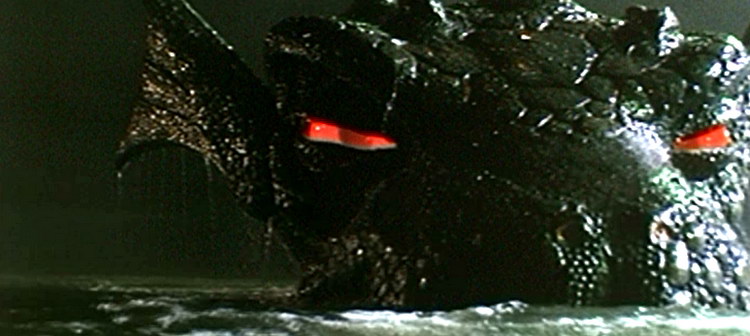
Mother Love expands to monstrous – and destructive – proportions in this English movie about a giant prehistoric beast run amok. Gorgo’s Mom is not really malicious; she’s just looking for her off-spring, but her effect on London is pretty dire, including the destruction of London Bridge.
The Horta in “Devil in the Dark” (Star Trek)

Like Gorgo, the Horta is not truly malicious – unless provoked. Initially presented as a mindless monster, this silicon-based life form on the planet Janus VI racks up an impressive body count (over 50 victims). Like The Blob, she dissolves her victims (with corrosive acid), and no obstacles stands in her way – she is capable of appearing anywhere. However, a mind meld with Mr. Spock reveals a startling truth: the Horta is an inoffensive creature, the only member of her species left alive, destined to mother the next generation of her race, when they hatch from the silicon eggs that human miners have thoughtlessly been destroying in their quest to find new deposits of valuable minerals. The poor Horta has merely been fighting back to protect her children and ensure the future survival of her kind. In the episode’s remarkable climax, the vengeful human miners try to attack the alien Horta, but Captain Kirk stops the lynch mob by threatening to kill anyone who harms the creature – siding with the “monster” instead of his fellow Earthlings (a moment that eerily prefigures Hugh Thompson Jr.’s actions at the My Lai Massacre a year later). Alone among the mothers in this list, the Horta survives to happily co-exist with her one-time enemies.
The Older Woman in ONIBABA (1964)

This Japanese horror flick features a metaphoric if not literal Onibaba (“Demon Woman”), a mother whose son has died in a feudal war. Teamed up with her daughter-in-law, she makes a living by killing off stray samurai and selling their armor. When her son’s friend returns from the war and starts an affair with the young woman, the Mother-in-Law resorts to rather heinous method to break them up, filling her daughter-in-law’s head with superstitious fears – that seem to come true when a demon appears in the rice fields. Whether real or imagined, the supernatural horrors pale in comparison to the ruthless efficiency with which the two women dispatch their victims.
Carlo’s Mother in DEEP RED (1975)

This Dario Argento thriller, one of his best, plays a wicked game, leading the audience to believe that self-pitying drunk Carlo is the murderer, but it turns out to be his eccentric mother, who previously seemed like nothing more than a comic relief supporting player (she cannot remember that the hero is a jazz pianist, not an engineer). Martha is one mean bitch, with a body count to her credit that would put Mrs. Voorhees to shame: axing a woman and shoving her head-first through a glass window; drowning another woman in scalding hot water; bashing another’s teeth in and impaling him through the neck with a blade that pins him to a table; and best of all, murdering her husband on Christmas by stabbing him in the back while Carlo (then a toddler) looks in soul-shattering shock (which may explain why he becomes a pathetic alcoholic).
Mrs. White in CARRIE (1976)

The deranged parent certainly gives Mrs. Bates a run for her money in the malevolent mother sweepstakes (a point underlined by director Brian DePalma, who renamed the high school “Bates High,” a name not used in the Stephen King novel). Mrs. White is a whacked out religious loony who sadistically mistreats her telekinetic daughter Carrie, acting out the kind of scenes we could only imagine took place in PSYCHO. No wonder the poor teenage girl eventually goes postal on the entire high school and eventually her mother.
Nola Carveth in THE BROOD (1979).

In this film, writer-director David Cronenberg turns the very act of motherhood into a miasma of horror. Nola is a psychotic undergoing treatment that allows her to manifest her inner demons somatically, which she does by giving birth to deformed children that act out her homicidal wishes. She claims only a few victims; the real horror is watching her birth one of her babies, biting open the external sack in which it grows and licking it clean. You won’t want to eat for a week.
Mother in ALIEN (1979).

This Nostromo’s onboard computer does precious little to help the human crew against the marauding alien that has infiltrated the spaceship. Worse yet, after Ripley has reversed the ship’s self-destruct sequence, Mother refuses to acknowledge the override and insists on nuking the Nostromo anyway. Mother does not have enough personality to be a real character (she is no HAL 9000), but she seems to be one cold-hearted bitch.
Mrs. Voorhees in FRIDAY THE 13TH (1980).

Like Martha in DEEP RED, Mrs. Voorhees is revealed as the killer only in the final reel, so we have to retroactively credit her for the film’s high body count. She is one wacked-out woman, speaking in a childish voice that is supposed to represent her drowned son Jason. Speaking of retroactive reassessment, the revelation in FRIDAY THE 13TH PART 2 – that Jason is alive – makes Mrs. Voorhees seem even nuttier: she kills off a bunch of camp counselors to avenge her son, but it turns out he survived. So, did she just imagine the drowning? Has she been psychologically blind to his existence since then? Whatever the case, this is another bad example of the poisonous effects of Mother Love.
Anna in POSSESSION (1981)

This weird story of marital discord features a woman (Isabell Adjani) whose deteriorating relationship with her husband somehow leads to her giving birth to a slimy monster with tentacles. As if this were not bad enough, she has a sexual relationship with Junior, who eventually starts to resemble her husband. None of it makes sense on a literal plot level, but the film is interesting if you read its outre elements as externalizations of the characters’ inner turmoils.
Sil in SPECIES(1995)

Her appearance and actions (seducing and killing her male victims) seems to put her into the femme fatale category, but the true horror of Sil is that she is capable of mothering a new alien race capable of overrunning the world and wiping out humanity. To give her credit, we have to assume that, as malicious as she acts toward humanity, she probably would have made a good mother to her own children.
Grace Stewart in THE OTHERS (2001)

Grace appears to be the very definition of a protective, loving mother as this ghost story follows her attempts to shield her children from a supernatural force lurking in their isolated English mansion. However, a last-reel twist casts a new light on her behavior…
Kayako in JU-ON: THE GRUDE (2003).
Kayako is both victim and villain: murdered by her husband, she comes back as a malevolent ghost, along with her ghostly son Toshio, wrecking death and destruction for years afterwards. Over the course of six films, she tallies up an awesomely impressive kill count, but what is most memorable about her is not mere numbers; it is the spooky, inexplicable, and almost random way she manifests, following no clear rules that would allow potential victims to avoid her. The American remake, THE GRUDGE, makes it clear that Kayako’s husband killed both her and Toshio. The Japanese original shows Toshio escaping his father’s rampage, leaving it up to the audience to figure out how he died. The only possible conclusion is that he was the first victim of his mother’s vengeful spirit.
Mater Suspiriorum, Mater Tenebrarum, and Mater Lachrymarum in the “Three Mothers Trilogy:” SUSPIRIA (1977), INFERNO (1980), and THE MOTHER OF TEARS (2007)
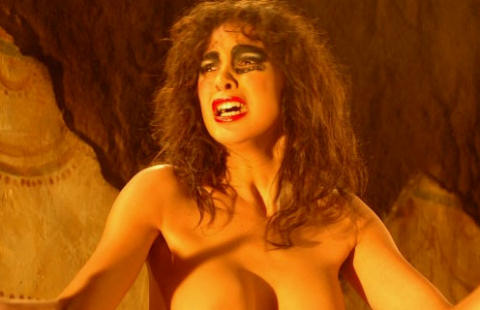
Inspired by Thomas DeQuincey’s essay “Lavana and Our Ladies of Sorrow,” Dario Argento created this trio of witches whose names translate as Mother of Sighs, Mother of Darkness, and Mother of Tears. Despite their names, they are actually “wicked step-mothers, incapable of creating life, who rule the world with sorrow, tears, and darkness.” Collectively, they are responsible for some of the most brutal and graphic murders ever perpetrated on screen (although, technically, the killings are usually carried out by underlings).
In each of the first two films, the atrocities are centered mostly around an ancient dwelling place housing one of the witches; THE THIRD MOTHER ups the ante, with Mater Lachrymarum’s evil influence spreading throughout the streets of Rome with almost apocalyptic effects. Never has the power of Motherhood been so explicity alligned with supernatural – not psychological – evil, creating a disturbing sense of an innocent world at the mercy of forces so powerful they almost defy comprehension.
Top 20 Chick Flick Horror Movies
So, you’re a horror movie maniac. You just can’t get enough of ’em. You love the thrill of fear, the scream of terror, the sight of blood. But you have a problem: Your boxed set of BLIND DEAD movies does not enamor your girlfriend. Your Lucio Fulci collection does not send your paramour swooning with rapture. Your unrated torture porn DVDs do not arouse interest. The midnight movie screening of GRINDHOUSE does not inspire romantic fantasies. The latest French gore-fest does not excite erotic intrigue. If anything, the woman in your life is wondering whether you’re a latent serial killer whose interest in the female body does not extend beyond seeing it torn to pieces. You are faced with a dreadful dilemma: either continue to alienate your significant other or stuff those video nasties in the back of the closet along with the real pornography and suffer through endless nights of watching mind-numbingly boring chick flicks like BED OF ROSES (a fate that frightens you far more than anything in your horror collection). Well, lucky for you, we’re here to save the day. You see, there is a way to share your love of the horror genre with a psychologically stable female partner who is not interested in watching an endless stream of blood gushing across the screen. Believe it or not, there are “chick flick” horror movies. They may not be as intense and hardcore as some of your favorite splatter flicks, but they are quite good in their own right, with plenty of appeal to both men and women. Below, we will provide our list of the Top 20 Best Chick Flick Horror Movies.
NOTE: We have more or less listed the films in order of their female appeal, which means that the top-ranked films may not be the most frightening. The first ten tend to emphasize romantic elements of the sort that might be found in a mainstream “chick flick.” The remaining ten simply feature strong female leads.
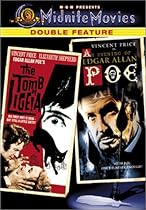 1. TOMB OF LIGEIA (1964). This adaptation of Edgar Alan Poe’s “Ligeia,” features Vincent Price as a man obsessed with the fear that his late wife will return from the grave to haunt him. Although technically too old for role, which was written as a young romantic lead, Price is wonderful as the doomed widower; with a little assist from the makeup department, he conveys the necessary mystique. Lady Rowena (Elizabeth Shepherd) meets and falls in love with him, inspiring him to overcome his fear and marry her. The story is told from Rowena’s point of view, as she is intrigued and enamored by this brooding, mysterious man, only to learn that the dark secret hanging over him will not easily be dispelled. Thanks to a strong performance by Shepherd, working from a great script by Robert Towne, Rowena emerges as one of cinema’s strongest leading ladies – willful and intelligent, she risks her life to drag her husband from the grip of the late Lady Ligeia. The horror element is very muted; the emphasis is on the doomed romance between the two lovers. A moody masterpiece, the film’s fear factor is mostly implied; director Roger Corman includes a few jump scares (the sudden snarl of a cat) and some hypnotic dream sequences, creating an almost surreal sense of dread the relies on Gothic atmopshere more than on-screen violence. In short, this Gothic Romance is the perfect date night rental: you can enjoy the “Gothic,” and she will enjoy the “Romance.”
1. TOMB OF LIGEIA (1964). This adaptation of Edgar Alan Poe’s “Ligeia,” features Vincent Price as a man obsessed with the fear that his late wife will return from the grave to haunt him. Although technically too old for role, which was written as a young romantic lead, Price is wonderful as the doomed widower; with a little assist from the makeup department, he conveys the necessary mystique. Lady Rowena (Elizabeth Shepherd) meets and falls in love with him, inspiring him to overcome his fear and marry her. The story is told from Rowena’s point of view, as she is intrigued and enamored by this brooding, mysterious man, only to learn that the dark secret hanging over him will not easily be dispelled. Thanks to a strong performance by Shepherd, working from a great script by Robert Towne, Rowena emerges as one of cinema’s strongest leading ladies – willful and intelligent, she risks her life to drag her husband from the grip of the late Lady Ligeia. The horror element is very muted; the emphasis is on the doomed romance between the two lovers. A moody masterpiece, the film’s fear factor is mostly implied; director Roger Corman includes a few jump scares (the sudden snarl of a cat) and some hypnotic dream sequences, creating an almost surreal sense of dread the relies on Gothic atmopshere more than on-screen violence. In short, this Gothic Romance is the perfect date night rental: you can enjoy the “Gothic,” and she will enjoy the “Romance.”
 2. I WALKED WITH A ZOMBIE (1943). Producer Val Lewton famously called this movie “Jane Eyre in the West Indies.” He may have been joking, but the statement was accurate enough in its way. The story follows a nurse named Betsy (Frances Dee) who gets a job on a plantation tending the brain-dead wife of her employer Paul (Tom Conway). The wife may or may not be a zombie (the film is deliberately ambiguous on this point); either way, her presence is a living a reminder of ugly family secrets that Paul would rather forget. Betsy falls in love with him, of course, but she sublimates her desire by trying to cure Paul’s wife, taking her to a voodoo ceremony. The attempt backfires: the locals are terrified of the zombie woman and want to destroy her. Atypically for the horror genre, the characterization and performances outweigh the horror; Director Jacques Tourner presents the horror almost entirely in terms of atmosphere, creating a dream-like world in which science and the supernatural vie for acceptance, but ultimately, the voodoo element is a backdrop for the love story between Betsy and Paul, with her in the Jane Ayre role and him as the Byronic Rochester substitute. Best of all, the lovers actually get together and (presumably) live happily ever after.
2. I WALKED WITH A ZOMBIE (1943). Producer Val Lewton famously called this movie “Jane Eyre in the West Indies.” He may have been joking, but the statement was accurate enough in its way. The story follows a nurse named Betsy (Frances Dee) who gets a job on a plantation tending the brain-dead wife of her employer Paul (Tom Conway). The wife may or may not be a zombie (the film is deliberately ambiguous on this point); either way, her presence is a living a reminder of ugly family secrets that Paul would rather forget. Betsy falls in love with him, of course, but she sublimates her desire by trying to cure Paul’s wife, taking her to a voodoo ceremony. The attempt backfires: the locals are terrified of the zombie woman and want to destroy her. Atypically for the horror genre, the characterization and performances outweigh the horror; Director Jacques Tourner presents the horror almost entirely in terms of atmosphere, creating a dream-like world in which science and the supernatural vie for acceptance, but ultimately, the voodoo element is a backdrop for the love story between Betsy and Paul, with her in the Jane Ayre role and him as the Byronic Rochester substitute. Best of all, the lovers actually get together and (presumably) live happily ever after.
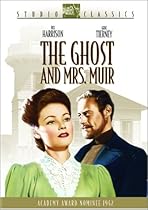 3. THE GHOST AND MRS MUIR (1947). This classic is much more romantic-comedy than horror, but the early scenes – when Mrs. Muir (Gene Tierney) moves into the old house and realizes it is haunted by the ghost of an old sea captain (Rex Harrison) are as effective as any genuine haunted-house movie. The ghost’s first appearance – a shadowy, out-of-focus silhouette – sends a shiver or two down the spine, and his later full-blown revelation -when Mrs. Muir lights and candle, revealing him standing next to her – is a genuine shock. After this, the film segues into a love story levened with humor, but Tierney and Harrison are absolutely wonderful, and the film will charm the woman in your life – and entertain you as well.
3. THE GHOST AND MRS MUIR (1947). This classic is much more romantic-comedy than horror, but the early scenes – when Mrs. Muir (Gene Tierney) moves into the old house and realizes it is haunted by the ghost of an old sea captain (Rex Harrison) are as effective as any genuine haunted-house movie. The ghost’s first appearance – a shadowy, out-of-focus silhouette – sends a shiver or two down the spine, and his later full-blown revelation -when Mrs. Muir lights and candle, revealing him standing next to her – is a genuine shock. After this, the film segues into a love story levened with humor, but Tierney and Harrison are absolutely wonderful, and the film will charm the woman in your life – and entertain you as well.
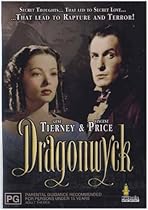 4. DRAGONWYCK (1946). This Gothic-Mystery-Romance features both Gene Tierney and Vincent Price; in many ways, it predates Price’s later TOMB OF LIGEIA, and it was filmed when he was still young enough to play a leading man. More important, this was before he had earned a reputation for screen villainy, so the horrible revelations about his character come as a complete surprise, instead of being telegraphed (as they are in LIGEIA). Price plays the wealthy Nicholas Van Ryn, who sweeps the lovely Miranda Wells (Tierney) off her feet and takes her as his bride to his ancestral estate of Dragonwyck. Miranda’s happiness is soon marred by strange noises in the night and other dark forebodings. Eventually we realize that Nicholas is interested in her only as a means of producing an heir to continue the family line, and if she fails in that duty, he may have to do away with her (as he did his previous wife) and find a replacement. It’s a bit of a stretch to call this a “horror” film, but it is steeped in Gothic atmosphere. Tierney, as always, is a captivating presence, and the romantic chemistry between her and Price is engaging, even if it eventually turns sour. If you like this film, you might also try REBECCA, the 1940 Alfred Hitchcock film starring Laurence Olivier and Joan Fontaine, with Judith Anderson as the wonderfully wicked servant Mrs. Danvers. It’s another Gothic Melodrama – not an outright horror film, but filled with mystery and romance that plays well with both male and female viewers.
4. DRAGONWYCK (1946). This Gothic-Mystery-Romance features both Gene Tierney and Vincent Price; in many ways, it predates Price’s later TOMB OF LIGEIA, and it was filmed when he was still young enough to play a leading man. More important, this was before he had earned a reputation for screen villainy, so the horrible revelations about his character come as a complete surprise, instead of being telegraphed (as they are in LIGEIA). Price plays the wealthy Nicholas Van Ryn, who sweeps the lovely Miranda Wells (Tierney) off her feet and takes her as his bride to his ancestral estate of Dragonwyck. Miranda’s happiness is soon marred by strange noises in the night and other dark forebodings. Eventually we realize that Nicholas is interested in her only as a means of producing an heir to continue the family line, and if she fails in that duty, he may have to do away with her (as he did his previous wife) and find a replacement. It’s a bit of a stretch to call this a “horror” film, but it is steeped in Gothic atmosphere. Tierney, as always, is a captivating presence, and the romantic chemistry between her and Price is engaging, even if it eventually turns sour. If you like this film, you might also try REBECCA, the 1940 Alfred Hitchcock film starring Laurence Olivier and Joan Fontaine, with Judith Anderson as the wonderfully wicked servant Mrs. Danvers. It’s another Gothic Melodrama – not an outright horror film, but filled with mystery and romance that plays well with both male and female viewers.
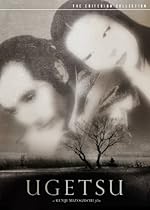 5. UGETSU (1953). Director Kenji Mizoguchi’s period piece, detailing the impact of civil war on two married couples, flirts with the horror genre in several scenes, ultimately turning into a ghost story. There are no overt shocks, but there are some wonderfully eerie moments when a husband realizes he is consorting with a ghost. The overall feeling is one of sorrow more than scares. The movie is ultimately about the price that women pay while their men try to achieve glory and honor during wartime. The result is a real tear-jerker that will have your girlfriend reaching for the tissue box and marveling at what a sensitive soul you are, while you enjoy the ghostly apparitions.
5. UGETSU (1953). Director Kenji Mizoguchi’s period piece, detailing the impact of civil war on two married couples, flirts with the horror genre in several scenes, ultimately turning into a ghost story. There are no overt shocks, but there are some wonderfully eerie moments when a husband realizes he is consorting with a ghost. The overall feeling is one of sorrow more than scares. The movie is ultimately about the price that women pay while their men try to achieve glory and honor during wartime. The result is a real tear-jerker that will have your girlfriend reaching for the tissue box and marveling at what a sensitive soul you are, while you enjoy the ghostly apparitions.
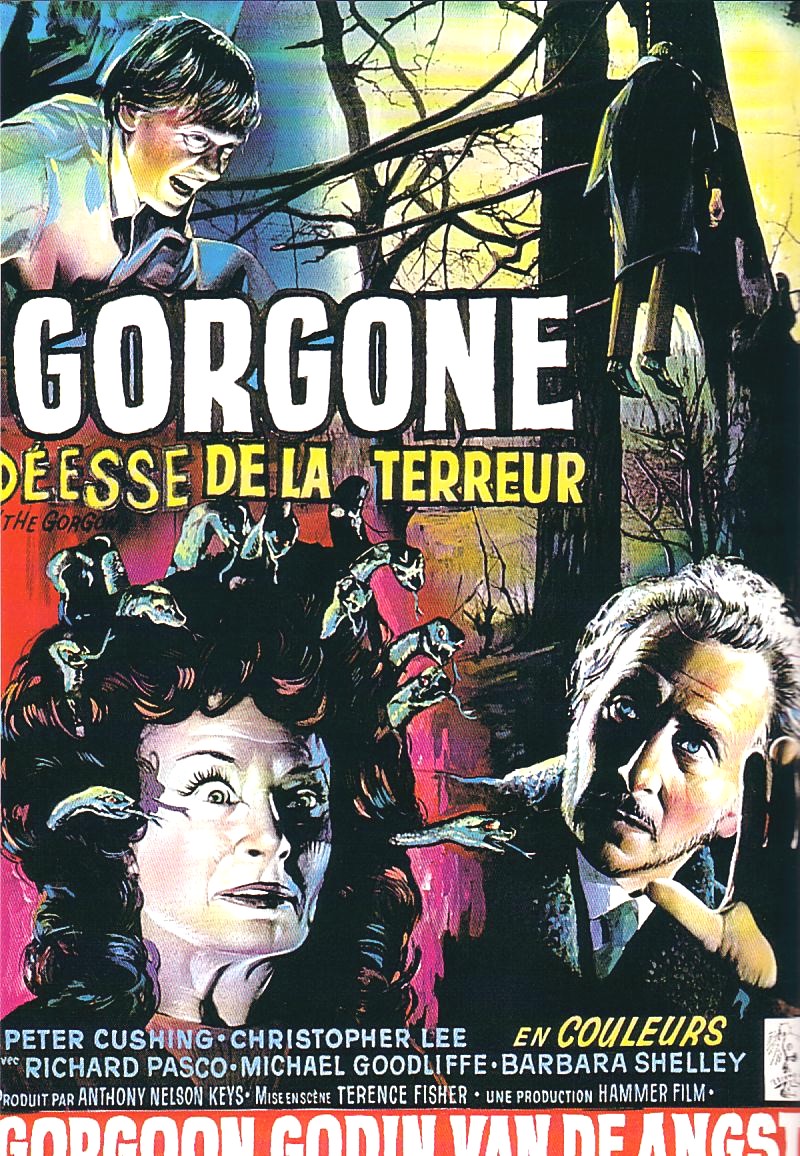 6. THE GORGON (1964). This is not the most effective Hammer horror film in terms of providing scares, but that is only because the emphasis is on romance. The film is a doomed love story about a young student named (Richard Pasco) who comes to a village where a monster is petrifying its victims. After a close encounter with the Gorgon, Paul is nursed back to health by Carla (Barbara Shelley) and falls in love with her. Carla, although she returns his affection, is bound by some dark power over her; eventually, we realize that during the full moon, she becomes the Gorgon. The dynamic acting duo of Peter Cushing and Christopher Lee are on hand as a doctor and a professor, each separately trying to solve the problem, but ultimately there is no hope for Carla or Paul. The film’s greatest achievement is that its horror effects are orchestrated for their emotional impact: this isn’t a movie that has you screaming in terror but weeping in sadness over the plight of the young lovers. The finale will have you and your lady-friend exchanging bodily fluids, but they will be tears of sadness.
6. THE GORGON (1964). This is not the most effective Hammer horror film in terms of providing scares, but that is only because the emphasis is on romance. The film is a doomed love story about a young student named (Richard Pasco) who comes to a village where a monster is petrifying its victims. After a close encounter with the Gorgon, Paul is nursed back to health by Carla (Barbara Shelley) and falls in love with her. Carla, although she returns his affection, is bound by some dark power over her; eventually, we realize that during the full moon, she becomes the Gorgon. The dynamic acting duo of Peter Cushing and Christopher Lee are on hand as a doctor and a professor, each separately trying to solve the problem, but ultimately there is no hope for Carla or Paul. The film’s greatest achievement is that its horror effects are orchestrated for their emotional impact: this isn’t a movie that has you screaming in terror but weeping in sadness over the plight of the young lovers. The finale will have you and your lady-friend exchanging bodily fluids, but they will be tears of sadness.
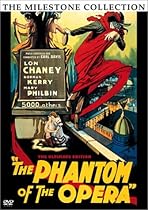 7. THE PHANTOM OF THE OPERA (1925). This famous tale of the deformed mystery man lurking beneath the Paris Opera House is now considered a horror film, but in its day it was more of a mystery-thriller-romance. Erik the Phantom (Lon Chaney) delivers a series of frights (including the famous unmasking of his horrifying visage), but the story is really about his hopeless love for the young and beautiful opera singer Christine (Mary Philbin). The style of this old silent film is dated and stagy, but Chaney keeps it interesting; also, the sets and photography capture the right atmosphere – part horror and part fairy tale – creating the perfect setting for the this variation on “Beauty and the Beast,” with the monster evoking sympathy because of the tender emotions hiding behind his ugly countenance. There have been several remakes. The 1962 version is perhaps even more of a chick flick in that it de-emphasizes the horror element and purifies the Phantom (Herbert Lom)’s motives: he’s no longer interested in Christine sexually, only spiritually. The result yields few frights, but the film possesses a tender quality rare in the horror genre – which should increase its appeal to the distaff side of the audience.
7. THE PHANTOM OF THE OPERA (1925). This famous tale of the deformed mystery man lurking beneath the Paris Opera House is now considered a horror film, but in its day it was more of a mystery-thriller-romance. Erik the Phantom (Lon Chaney) delivers a series of frights (including the famous unmasking of his horrifying visage), but the story is really about his hopeless love for the young and beautiful opera singer Christine (Mary Philbin). The style of this old silent film is dated and stagy, but Chaney keeps it interesting; also, the sets and photography capture the right atmosphere – part horror and part fairy tale – creating the perfect setting for the this variation on “Beauty and the Beast,” with the monster evoking sympathy because of the tender emotions hiding behind his ugly countenance. There have been several remakes. The 1962 version is perhaps even more of a chick flick in that it de-emphasizes the horror element and purifies the Phantom (Herbert Lom)’s motives: he’s no longer interested in Christine sexually, only spiritually. The result yields few frights, but the film possesses a tender quality rare in the horror genre – which should increase its appeal to the distaff side of the audience.
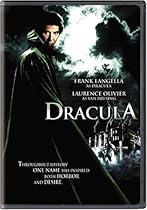 8. DRACULA (1979). There has always been a certain sexual innuendo underlying the Dracula myth, with the mysterious, dark, foreign stranger sneaking into the bedrooms of virginal British ladies. Bela Lugosi played up the foreign mystique, and Christopher Lee emphasized the sexual aggression, but Frank Langella turned the Count into a romantic anti-hero, dashing and seductive, who not only lusts for women (their bodies and their blood) but loves Lucy(Kate Nelligan) for her spirit and intelligence. In 1992, BRAM STOKER’S DRACULA, tries to emphasize the romance even more, but director Francis Ford Coppola fumbles, turning the story into an overwrought teen romance better suited to an episode of JERRY SPRINGER (vampires – and the women who love them).
8. DRACULA (1979). There has always been a certain sexual innuendo underlying the Dracula myth, with the mysterious, dark, foreign stranger sneaking into the bedrooms of virginal British ladies. Bela Lugosi played up the foreign mystique, and Christopher Lee emphasized the sexual aggression, but Frank Langella turned the Count into a romantic anti-hero, dashing and seductive, who not only lusts for women (their bodies and their blood) but loves Lucy(Kate Nelligan) for her spirit and intelligence. In 1992, BRAM STOKER’S DRACULA, tries to emphasize the romance even more, but director Francis Ford Coppola fumbles, turning the story into an overwrought teen romance better suited to an episode of JERRY SPRINGER (vampires – and the women who love them).
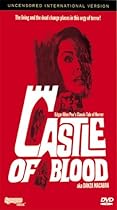 9. CASTLE OF BLOOD (1964). Allegedly based on the work of Edgar Alan Poe, this Italian Gothic horror story tells of Alan, a reporter who wagers he can spend a night alone in a haunted castle. He meets a variety of spooks, including a very alluring one named Elizabeth (played by Barbara Steele, the Queen of Horror). They fall in love, but being – literally – from two different worlds, they cannot stay together, or so it seems. As daylight draws near, the other ghosts come seeking the young man’s blood; Elizabeth tries to lead him to safety, but he dies on the verge of escape. The seemingly downbeat ending is actually a triumph of love over death. As the camera pans up to the sunlight, we hear the disembodied spirits of Alan and Elizabeth conversing, and we know that they are now together for eternity – the ultimate romantic fantasy. Steele also starred in a dual role as an innocent princess and a vampire-witch in the 1960 classic BLACK SUNDAY – a much more effective horror film that also has a strong romantic element, thanks to the chemistry between the princess and a young doctor (John Richardson) who seeks to save her from the vampire.
9. CASTLE OF BLOOD (1964). Allegedly based on the work of Edgar Alan Poe, this Italian Gothic horror story tells of Alan, a reporter who wagers he can spend a night alone in a haunted castle. He meets a variety of spooks, including a very alluring one named Elizabeth (played by Barbara Steele, the Queen of Horror). They fall in love, but being – literally – from two different worlds, they cannot stay together, or so it seems. As daylight draws near, the other ghosts come seeking the young man’s blood; Elizabeth tries to lead him to safety, but he dies on the verge of escape. The seemingly downbeat ending is actually a triumph of love over death. As the camera pans up to the sunlight, we hear the disembodied spirits of Alan and Elizabeth conversing, and we know that they are now together for eternity – the ultimate romantic fantasy. Steele also starred in a dual role as an innocent princess and a vampire-witch in the 1960 classic BLACK SUNDAY – a much more effective horror film that also has a strong romantic element, thanks to the chemistry between the princess and a young doctor (John Richardson) who seeks to save her from the vampire.
10. THE GIRL IN A SWING (1989). This small independent film, based on the novel by Richard Adams, is essentially a love story about a repressed British man (Rupert Frazer), who meets and marries a mysterious German girl named (Meg Tilly). In the great tradition of tragic romances, the marraige is doomed, but only gradually do hints of a haunting arise, related to some guilty secret of Karin’s. The relentless ghost is seldom seen, keeping the horror content to a minimum; instead, the film focuses on the tragedy of the relationship. Though far from a masterpiece, the film works in its own way, achieving its emotional effects with far less cheesy manipulation than LOVE STORY – and it has a ghost, too, so what more do you want?
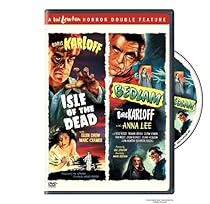 11. BEDLAM (1946). Another Val Lewton production, this period piece tells of an arrogant woman (Anna Lee) who is unfairly confined to the infamous English asylum. Although the official star is Boris Karloff (FRANKENSTEIN) as the asylum’s evil overlord, Lee gives a great performance in what is truly the lead role: charting her character’s arc from selfishness to concern for the other patients, she emerges as one of the great female characters in the history of horror cinema.
11. BEDLAM (1946). Another Val Lewton production, this period piece tells of an arrogant woman (Anna Lee) who is unfairly confined to the infamous English asylum. Although the official star is Boris Karloff (FRANKENSTEIN) as the asylum’s evil overlord, Lee gives a great performance in what is truly the lead role: charting her character’s arc from selfishness to concern for the other patients, she emerges as one of the great female characters in the history of horror cinema.
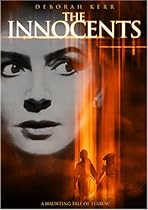 12. THE INNOCENTS (1960). This excellent English ghost story, based on Henry James’ The Turn of the Screw, stars Deborah Kerr as Miss Giddens, a governess put in charge of two children living in a secluded mansion. She gradually comes to believe that the house is haunted and that the children are in league with the ghosts. The film is deliberately ambiguous: are the ghosts real or is Miss Giddens imagining them? Either way, it is a wonderful portrait of a woman desperately dealing with a horrible situation without a hero to ride in and rescue her.
12. THE INNOCENTS (1960). This excellent English ghost story, based on Henry James’ The Turn of the Screw, stars Deborah Kerr as Miss Giddens, a governess put in charge of two children living in a secluded mansion. She gradually comes to believe that the house is haunted and that the children are in league with the ghosts. The film is deliberately ambiguous: are the ghosts real or is Miss Giddens imagining them? Either way, it is a wonderful portrait of a woman desperately dealing with a horrible situation without a hero to ride in and rescue her.
 13. THE HAUNTING (1963). Another great ghost story, this one portrays an attempt to investigate the “Mount Everest of Haunted Houses.” Based on Shirley Jackson’s The Haunting of Hill House, the story is told from the point of view of Nell (Julie Harris), a fragile young woman whose desperate need for love and acceptance lures her to succumb to Hill House. An effective scare-fest, this film is also a great character study that should appeal to female viewers. Men can enjoy the scares and the presence of Claire Bloom as Theo, whom the film none too subtly insinuates is a lesbian. The 1974 film THE LEGEND OF HELL HOUSE deals with a similar situation: a team of two men and two women attempt a sceintific investigation of a haunted house. The scares are a bit more overt, and the psychology less in depth, but the film retains some “chick flick” interest thanks to the performances of Pamela Franklyn and Gayle Hunnicutt, who help create characters that the women in the audience can identify with.
13. THE HAUNTING (1963). Another great ghost story, this one portrays an attempt to investigate the “Mount Everest of Haunted Houses.” Based on Shirley Jackson’s The Haunting of Hill House, the story is told from the point of view of Nell (Julie Harris), a fragile young woman whose desperate need for love and acceptance lures her to succumb to Hill House. An effective scare-fest, this film is also a great character study that should appeal to female viewers. Men can enjoy the scares and the presence of Claire Bloom as Theo, whom the film none too subtly insinuates is a lesbian. The 1974 film THE LEGEND OF HELL HOUSE deals with a similar situation: a team of two men and two women attempt a sceintific investigation of a haunted house. The scares are a bit more overt, and the psychology less in depth, but the film retains some “chick flick” interest thanks to the performances of Pamela Franklyn and Gayle Hunnicutt, who help create characters that the women in the audience can identify with.
 14. THE OTHERS (2001). Intentionally molded in the tradition of THE INNOCENTS, this ghost story features another strong female lead, in this case played by the talented Nicole Kidman. The scares are extremely effective, but what holds interest from beginning to end is the focus on Kidman’s Grace Stewart as she desperately tries to protect her children from the mysterious forces at work in their isolated house.
14. THE OTHERS (2001). Intentionally molded in the tradition of THE INNOCENTS, this ghost story features another strong female lead, in this case played by the talented Nicole Kidman. The scares are extremely effective, but what holds interest from beginning to end is the focus on Kidman’s Grace Stewart as she desperately tries to protect her children from the mysterious forces at work in their isolated house.
 15. THE ORPHANAGE (2007). Belen Rueda stars as Laura, a woman whose son goes missing in their new house, possibly abducted by ghosts. As with the three previous entries on our list, this film orchestrates a series of unnerving spooky encounters while focusing on the drama of the woman trying to deal with them. There is also a strong maternal element that plays well with women. Although vulnerable, Laura is not a Scream Queen or a victim; she’s not even the traditional “Final Girl” who survives and triumphs. She’s a complex, damaged woman who keeps going even when pushed to extremes. The film was executive produced by Guillermo Del Toro, whose PAN’S LABYRINTH and THE DEVIL’S BACKBONE may also appeal to women, because of their portrait of childhood innocence menaced by adult horrors, with empahsis on emotional content.
15. THE ORPHANAGE (2007). Belen Rueda stars as Laura, a woman whose son goes missing in their new house, possibly abducted by ghosts. As with the three previous entries on our list, this film orchestrates a series of unnerving spooky encounters while focusing on the drama of the woman trying to deal with them. There is also a strong maternal element that plays well with women. Although vulnerable, Laura is not a Scream Queen or a victim; she’s not even the traditional “Final Girl” who survives and triumphs. She’s a complex, damaged woman who keeps going even when pushed to extremes. The film was executive produced by Guillermo Del Toro, whose PAN’S LABYRINTH and THE DEVIL’S BACKBONE may also appeal to women, because of their portrait of childhood innocence menaced by adult horrors, with empahsis on emotional content.
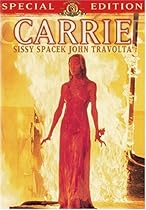 16. CARRIE (1976). Despite director Brian DePalma’s reputation as a cinematic misogynist, this hit horror film features two actresses (Sissy Spacek and Piper Laurie) in strong roles, giving Oscar-nominated performances. This is more a high-school horror film than a chick flick, but it captures a sense of ordinary people living in a world we all recognize, and despite the horrible vengeance she ultimately unleashes on her tormentors, Carrie remains a sympathetic character that women – and men – can relate to.
16. CARRIE (1976). Despite director Brian DePalma’s reputation as a cinematic misogynist, this hit horror film features two actresses (Sissy Spacek and Piper Laurie) in strong roles, giving Oscar-nominated performances. This is more a high-school horror film than a chick flick, but it captures a sense of ordinary people living in a world we all recognize, and despite the horrible vengeance she ultimately unleashes on her tormentors, Carrie remains a sympathetic character that women – and men – can relate to.
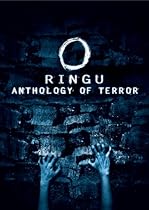 17 RING 0: BIRTHDAY (2000). This prequel to 1998’s RING (the film that launches the recent J-Horror wave) covers some of the same territory as CARRIE. Set in a small acting troup, it tells the story of Sadako (Yukie Nakama), a young misfit with strange powers, who is tormented by her fellow thespians until she turns the tables. Presenting a far more sympathetic portrait of Sadako than seen in the other RING films, this is pretty much a bust as a horror film, but it is an interesting portrait of a sad, lonely, mixed up girl trying to fit in. In general, ghost movies from Japan and other Asian nations should find favor with female viewers: they tend to feature female characters as the protagonists, and the restless spirits are almost always women, their power in death redressing the imbalance they suffered during their lives under a patriarchal culture. Besides RING, check out PHONE, THE EYE, JU-ON: THE GRUDGE, and SHUTTER.
17 RING 0: BIRTHDAY (2000). This prequel to 1998’s RING (the film that launches the recent J-Horror wave) covers some of the same territory as CARRIE. Set in a small acting troup, it tells the story of Sadako (Yukie Nakama), a young misfit with strange powers, who is tormented by her fellow thespians until she turns the tables. Presenting a far more sympathetic portrait of Sadako than seen in the other RING films, this is pretty much a bust as a horror film, but it is an interesting portrait of a sad, lonely, mixed up girl trying to fit in. In general, ghost movies from Japan and other Asian nations should find favor with female viewers: they tend to feature female characters as the protagonists, and the restless spirits are almost always women, their power in death redressing the imbalance they suffered during their lives under a patriarchal culture. Besides RING, check out PHONE, THE EYE, JU-ON: THE GRUDGE, and SHUTTER.
 18. ONIBABA (1964). This black-and-white Japanese horror classic has few traditional chick flick elements, but it focuses on two women in the lead roles. Like UGETSU, it portrays the suffering of women while their men are away at war; in this case a young woman and her mother-in-law make ends meet me murdering lone samurai and selling their armour. Toward the end there is a demonic appartion and possibly a curse, but much of the film’s appeal lies in watching the women dish out death to the men who fall into their trap.
18. ONIBABA (1964). This black-and-white Japanese horror classic has few traditional chick flick elements, but it focuses on two women in the lead roles. Like UGETSU, it portrays the suffering of women while their men are away at war; in this case a young woman and her mother-in-law make ends meet me murdering lone samurai and selling their armour. Toward the end there is a demonic appartion and possibly a curse, but much of the film’s appeal lies in watching the women dish out death to the men who fall into their trap.
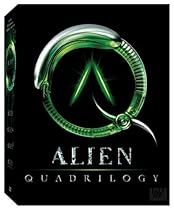 19. ALIEN (1979). There is not much about this film that labels it as a chick flick, but it does feature Sigourney Weaver as Warrant Officer Ripley, the character who once and for all over-turned the cliche of women as helpless screaming victims in monster movies. That should be enough to get your girlfriend to sit through the chest-burster and other horrors on display.
19. ALIEN (1979). There is not much about this film that labels it as a chick flick, but it does feature Sigourney Weaver as Warrant Officer Ripley, the character who once and for all over-turned the cliche of women as helpless screaming victims in monster movies. That should be enough to get your girlfriend to sit through the chest-burster and other horrors on display.
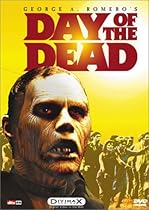 20. DAY OF THE DEAD(1985). This last title is really pushing it, but we think you deserve something in return for making the effort to find common ground with your squeamish main squeeze. After sitting through all those Gothic Romances, subtle ghost stories, and psychological terror tales, you want some gruesome gore, right? Well, this film from writer-director George Romero is just the thing: it’s brimming with blood, but it also has a strong female character in the lead, Lori Cardilel as Sarah. Inverting the formula of NIGHT OF THE LIVING DEAD, in which Barbra (Judith O’Dea) was pretty much a useless space case, Romero makes Sarah the only one who can keep her shit together while humanity totters on the brink of extinction. That may not make it a chick flick, but it should offer at least a little redeeming value for making the love your life watch a man ripped in half by cannibalistic zombies.
20. DAY OF THE DEAD(1985). This last title is really pushing it, but we think you deserve something in return for making the effort to find common ground with your squeamish main squeeze. After sitting through all those Gothic Romances, subtle ghost stories, and psychological terror tales, you want some gruesome gore, right? Well, this film from writer-director George Romero is just the thing: it’s brimming with blood, but it also has a strong female character in the lead, Lori Cardilel as Sarah. Inverting the formula of NIGHT OF THE LIVING DEAD, in which Barbra (Judith O’Dea) was pretty much a useless space case, Romero makes Sarah the only one who can keep her shit together while humanity totters on the brink of extinction. That may not make it a chick flick, but it should offer at least a little redeeming value for making the love your life watch a man ripped in half by cannibalistic zombies.
If you are interested in the films on this list, most of them are reviewed more fully elsewhere on the website. You can access the reviews by clicking on the titles that contain hyperlinks.
NOTE: Yes, this article makes sexist assumptions about what constitutes a “chick flick,” and we know that some women do not like the term – an issue we addressed in this previous editorial.
UPDATE (04/27/08): We have received some suggestions for titles we overlooked:
- Lucius Gore of Eplatter recommends SCREAM. I suppose the combination of humor and a strong “Final Girl” character would appeal to women more than a standard slasher movie.
- Brian Collins of Horror Movie a Day recommends GINGER SNAPS.
- Jeff Allard of Dinner with Max Jenke believes that ALIENS has a greater female appeal than ALIEN, which makes sense, considering the maternal themes in the film. He also recommends ROSEMARY’S BABY – which is such an obvious choice that I am embarrassed to have overlooked it. Roman Polanski’s adaptation of the Ira Levin novel is considered to be one of the greatest horror movies ever made (EXORCIST director William Friedkin puts it on his very short list here), and it’s all about a young married woman (Mia Farrow)undergoing her first pregnancy. Yes, we all know she is going to give birth to the spawn of Satan – or is she? The film actually delivers little-to-no evidence on this score except the professed belief of the Satanic cult (we’re supposed to trust them?). In a way, the movie plays out as a drama about a woman undergoing a trouble pregnancy, who is betrayed by her husband, and bedeviled by some kooky neighbors. In othe words, it is very much set in the real world, and features a situation that is completely relatable; even if the details are extreme, almost any woman could watch this movie and identify with what poor Rosemary is suffering.
UPDATE (01/28/09): Someone on an IMDB message board thread, linking to this article, suggested that THE DESCENT should have made the list.
Top Ten Zombie Films, Plus One or Two
With DIARY OF THE DEAD opening in exclusive engagements around the country this weekend, horror fans have zombies on the brain. In fact, zombie fans are probably wondering aloud at this very moment: Just what are the Top Ten Zombie Films of All Time? And we bet they just can’t wait for us to tell them – so here we go!
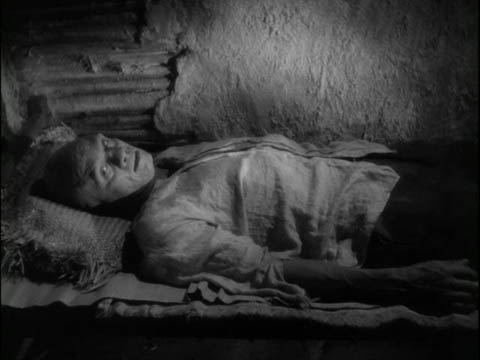
A word of warning: You may find this list questionable; in fact, you may find some of the entries and omissions so bizarre that you even start to question our sanity. Rest assured, however, that there is a method to our madness. Can you decipher what it is?
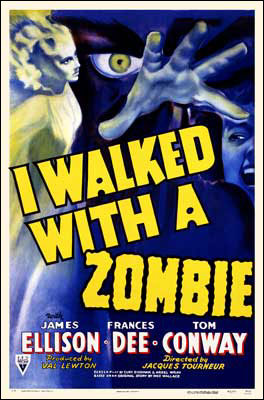 1. I WALKED WITH A ZOMBIE (1943). This moody black-and-white opus from the producer-director team of Val Lewton and Jacques Tourner features a nurse who comes to the West Indies to take charge of a catatonic patient. It turns out the brain-dead woman may have been struck down not by disease but by voodoo. Midway through, the nurse takes her patient on a long trek to a local priestess in hope of finding a cure; along the way, they encounter another zombie, Carrefour (Darby Jones) – or is he? The mysterious storyline leaves the question of the supernatural up for grabs, creating an eerie ambiguity that chills the mind.
1. I WALKED WITH A ZOMBIE (1943). This moody black-and-white opus from the producer-director team of Val Lewton and Jacques Tourner features a nurse who comes to the West Indies to take charge of a catatonic patient. It turns out the brain-dead woman may have been struck down not by disease but by voodoo. Midway through, the nurse takes her patient on a long trek to a local priestess in hope of finding a cure; along the way, they encounter another zombie, Carrefour (Darby Jones) – or is he? The mysterious storyline leaves the question of the supernatural up for grabs, creating an eerie ambiguity that chills the mind.
2. WHITE ZOMBIE (1932). Bela Lugosi (DRACULA) stars as a voodoo master who uses zombies to work his sugar mill. He is hired by a love-struck plantation owner to abscond with another man’s fiancee, but he decides to keep the beautiful woman for himself, turning her into a mindless automaton. The script makes clever use of the “facts” of zombies, reciting a local ordinance the prohibits the use of drugs to create a death-like trance from which the victim can be awakened. This leaves open the question of whether any of the zombies we see are, in fact, the walking dead or merely victims in a trance. Either way, this creaky old effort is historically important as the first zombie film ever, and it overcomes its flaws thanks to its rich atmosphere and the strength of Lugosi’s performance.
 3. THE SERPENT AND THE RAINBOW (1987). Director Wes Craven turns in a fictionalized film version of a non-fiction book about an anthropologist who heads to Haiti in search of the truth behind the myth of zombies. As in WHITE ZOMBIE, the scientific explanation revolves around the use of drugs to render the victim with no will of his own, so that he resembles the walking dead. However, Craven tosses in several of his patented hallucinatory dream sequences, leaving open the question of whether the supernatural exists or not.
3. THE SERPENT AND THE RAINBOW (1987). Director Wes Craven turns in a fictionalized film version of a non-fiction book about an anthropologist who heads to Haiti in search of the truth behind the myth of zombies. As in WHITE ZOMBIE, the scientific explanation revolves around the use of drugs to render the victim with no will of his own, so that he resembles the walking dead. However, Craven tosses in several of his patented hallucinatory dream sequences, leaving open the question of whether the supernatural exists or not.
4. THE GHOST BREAKERS (1940). Bob Hope and Paulette Godard star in this follow-up to THE CAT AND THE CANARY, in which the couple head to Cuba to take possession of an inherited castle, which turns out to be haunted not only by ghost but also, according to the locals, by a zombie (Noble Johnson). Although a comedy, the horror elements are played relatively straight, and the black-and-white atmosphere is genuinely spooky. Of course, the last-reel explains the supernatural elements away, but lingering doubts remain.
5. PLAGUE OF THE ZOMBIES (1966). Hammer Films’ only zombie flick is set in a Cornish village where a powerful local squire is using voodoo to revive the dead, whom he then puts to work in his tin mine. Although the ending is weak, this is otherwise a strong effort, featuring a wonderfully hallucinatory sequence of the dead rising from their graves, clawing their way through the earth to attack the hero, who watches in horror as the resurrected corpse of his dead wife is decapitated.
6. SUGAR HILL (1974). The titular character (played by Marki Bey) is a tough black woman who uses voodoo to seek revenge after her boyfriend is murdered by a white mobster as part of a plan to take over the victim’s night club. With the help of the god Baron Samedi, Sugar resurrects some black slaves who died on the boat to America centuries ago and turns the zombies loose on the murderous thugs. This obscure title is not really very good, but it is fun to see the cross-pollination of the blaxploitation and horror genres, and Robert Quarry, as the villain, is a real hoot.
 7. ZOMBIE (a.k.a. “Zombie 2,” 1980). Director Lucio Fulci’s rip-off of DAWN OF THE DEAD combines the explosive flesh-eating splatter of George A. Romero’s urban film with the moody island atmospherics of I WALKED WITH A ZOMBIE. The story is mostly set in the Caribbean, where a scientist (Richard Johnson) tries to find a solution to the question of why his dead patients keep returning from the grave. His assistant, a local native, believes he has the answer: a local voodoo priest has put a curse on the island that brings the dead back to life. This is the film with the infamous scene of a woman’s eye being skewered by a splinter of wood. Almost as much fun is the amusing but ridiculous scene of a face-off between a shark and a zombie, each trying to eat the other.
7. ZOMBIE (a.k.a. “Zombie 2,” 1980). Director Lucio Fulci’s rip-off of DAWN OF THE DEAD combines the explosive flesh-eating splatter of George A. Romero’s urban film with the moody island atmospherics of I WALKED WITH A ZOMBIE. The story is mostly set in the Caribbean, where a scientist (Richard Johnson) tries to find a solution to the question of why his dead patients keep returning from the grave. His assistant, a local native, believes he has the answer: a local voodoo priest has put a curse on the island that brings the dead back to life. This is the film with the infamous scene of a woman’s eye being skewered by a splinter of wood. Almost as much fun is the amusing but ridiculous scene of a face-off between a shark and a zombie, each trying to eat the other.
8. DAWN OF THE DEAD (a.k.a. “Zombie,” 1978). George A. Romero’s sequel to NIGHT OF THE LIVING DEAD relocates the cannibalistic corpses to a modern shopping mall, where a group of human survivors hope to ride out the apocalypse in comfort and style, thanks the the abundant supply of consumer goods around them. Whereas NIGHT offered a science-fiction explanation for the return of the dead (radiation from a crashed satellite), DAWN introduces hints of the supernatural, as Peter (Ken Foree) quotes his grandmother, a voodoo priestess: “When there’s no more room in Hell, the Dead will walk the Earth.” The film also includes Romero’s first reference to the living dead by their traditional voodoo name: when a motorcycle gang breaks into the mall near the end, Peter notes that the place will soon be filled with “zombies.”
 9. LAND OF THE DEAD (2005). Twenty years after DAY OF THE DEAD, Romero has another go at the subject, this time with metaphoric references to the military occupation of Iraq, in the form of a “Green Zone,” where the rich and affluent can live in comfort, protected from the horrors outside. This expensive studio films lacks the inspired creativity of Romero’s earlier films, but it still has plenty to offer, including an amusing performance from Dennis Hopper, who at one point remarks casually, “Zombies, man…they creep me out.”
9. LAND OF THE DEAD (2005). Twenty years after DAY OF THE DEAD, Romero has another go at the subject, this time with metaphoric references to the military occupation of Iraq, in the form of a “Green Zone,” where the rich and affluent can live in comfort, protected from the horrors outside. This expensive studio films lacks the inspired creativity of Romero’s earlier films, but it still has plenty to offer, including an amusing performance from Dennis Hopper, who at one point remarks casually, “Zombies, man…they creep me out.”
10. CHOPPER CHICKS IN ZOMBIE TOWN (1988). This low-budget cult film mixes elements of Russ Meyer with George Romero in its tale of a female biker gang that rides into a small town where a mad scientist (Don Calfa) has resurrected the dead and put them to work in the local Uranium mine. It’s not very scary, but it is quite funny. Billy Bob Thornton makes an early appearance as the boyfriend of one of the biker chicks, who becomes one of the living dead.
 11. UNDEAD (2004). A tongue-in-cheek effort from Australia, this film borrows Romero’s rules for the living dead (i.e., shoot ’em in the head) and adds slow-motion gunplay lifted from John Woo. It’s funny, though not quite as funny as it intended, and actor Mungo McKay’s attempt to channel Clint Eastwood through an Aussie accent is a bit of a botch. Still, you have to give credit to a film that has a hero who has been expecting the coming disaster ever since he was attacked by a “zombie fish.”
11. UNDEAD (2004). A tongue-in-cheek effort from Australia, this film borrows Romero’s rules for the living dead (i.e., shoot ’em in the head) and adds slow-motion gunplay lifted from John Woo. It’s funny, though not quite as funny as it intended, and actor Mungo McKay’s attempt to channel Clint Eastwood through an Aussie accent is a bit of a botch. Still, you have to give credit to a film that has a hero who has been expecting the coming disaster ever since he was attacked by a “zombie fish.”
12. ANDY WARHOL’S FRANKENSTEIN (a.k.a. “Flesh for Frankenstein,” 1974). Actually written by Warhol protege Paul Morrissey (with assistance from Antonio Margerit on filming the 3-D gore effects), this bizarre piece of bloody camp may seem out of place in this list, but Baron Frankenstein (the marvelous Udo Kier) refers to his piecemeal creations, male and female, as “my zombies.” This is a film that really needs to be seen in 3-D; otherwise, you loose the impact of those entrails handing out of the screen into your nose.
Well, that’s it – the Top Twelve Zombie Films of All Time. What’s that, you say? Wondering why SUGAR HILL ranks above DAWN OF THE DEAD? Aghast that your favorite flick is not on the list? Appalled by the absence of classics like NIGHT OF THE LIVING DEAD, EVIL DEAD 2, DAY OF THE DEAD, RE-ANIMATOR, DEATH DREAM, BRAIN DEAD (DEAD/ALIVE), THE BEYOND, CHILDREN SHOULDN’T PLAY WITH DEAD THINGS, TOMBS OF THE BLIND DEAD, and 28 DAYS LATER. Uncertain just what form of crack we’ve been smoking?
Well, we warned you up front that this list would be eccentric, but there is a rational behind our choices. Have you figured it out? It’s a little hard if you haven’t seen the films, but we tried to lace the entries with clues: check out the titles, plots descriptions, and dialogue references, and you might be able to piece it together, even if you have missed one or two of the movies.
Give up? Okay, we’ll tell you. By and large, when it comes to the cannibalistic walking dead seen on screen since NIGHT OF THE LIVING DEAD, the bottom line is this: They’re not Zombies!
As George Romero himself says, “For me, zombies were the slave workers in WHITE ZOMBIE [1932] with Bela Lugosi. […] I never thought of [the walking corpses in my films] as zombies; I never called them zombies in NIGHT. They were ‘ghouls’ or ‘those things.’”
As Romero rightly points out, the word “zombie” specifically refers to a corpse that is resurrected through voodoo and mindlessly obeys the commands of its master. Our Top Twelve emphasizes films that feature this traditional definition of the word “zombie.” Failing that, we have selected films that either include “zombie” in the title or use it in the dialogue to refer to the walking dead. Consequently, movies like ZOMBIE and SUGAR HILL, which feature Caribbean settings and/or references to voodoo, rank above Romero’s DAWN and LAND, which feature only brief lip service references to “zombies.” That’s why we called this a “Top Ten” list rather than a “Best of” list.
Okay, so maybe it’s not the cleverest conceit in the world, but it did give us an excuse to assemble a list that was not just a hodge-podge of the obvious.
